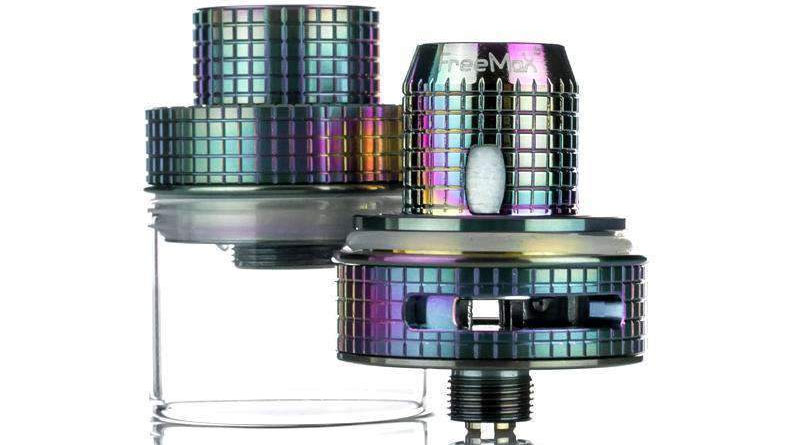There can be different kinds of dirt in your vape tanks, which will settle down over time. How do you clean your tanks and enjoy a pleasant grip?
An electronic cigarette is not a completely maintenance-free device that you could use for weeks and months, without even signing it. From time to time, the tank will need to be dismantled and cleaned. How does it work and what is needed? We will explain all of this in the following article.
How Does The Atomizer Tank Get Dirty?
Impurities can be internal and external. The outer ones will undoubtedly be the dust that gets into the vape tank continuously. This includes all kinds of dirt from the pockets in which we carry our e-cigarettes. Mostly they are small fibers that settle in the air inlets and also get into the mouthpiece. This type of dirt is particularly unpleasant as it gets into the places where we breathe steam and in which air flows. We strongly recommend frequent and regular cleaning of mouthpieces and air inlets.
However, impurities can also form inside the vape tank during use. Mostly, it is a caramelization of e-liquid or a worn-out cotton wool that will start to fall apart. In the case of a caramelized e-liquid, the filling itself will usually be discolored by spiraling. In this case, the spiral has worse properties, slower and less hot, but often it can also influence the flavor. However, this is mostly associated with worn cotton wool that has lost its absorbency.
There are also some e-liquids that can leave a noticeable trace even when they are drained or spilled . You can try to surprise such an e-liquid, but clearing is a sure bet.
Finally, it is also necessary to consider the case that the tank can be dirty from the production and after unpacking there are residues of oil. In this case, the vape tank needs to be cleaned for 100%.
Why Clean The Atomizer Tank?
It is said that cleanliness is half health and something similar could apply even in case of vaping. With a clean tank, you will definitely enjoy better vaping than dirty . The dirty tank greatly affects your enjoyment of it. If you want to enjoy only the best vaping, first-class taste of e-liquids and great vape tank qualities, you will need to care for your tank, and then you will get the perfect performance. That means cleaning your vape tank
How To Clean The Atomizer Tank?
Cleaning Your Vape With Water
Basic maintenance, which should be a routine for all RTAs, RDAs, RDTAs and Sub Ohm tank, as well as classic low-capacity tanks. Your want to dismantle your vape tank and simply rinse it in the water. Wiping with lukewarm water is enough to remove the wadding and external dirt. But you can also swim in the water. First, rinse it thoroughly and then treat it for a few hours of hot bath, which will remove the usual odor and less pronounced flavor.
In the event that your vape tank is contaminated by oil, it will need to be dismantled and left for a while in boiling water (ideally without sealing rings). This way you clean not only oils but also remnants of distinct flavors that otherwise would otherwise be in the tank would otherwise be difficult to get rid of.
Purification With Propylene Glycol
Another way to clean ecig tanks to get rid of the persistent flavor is a bath in propylene glycol. Remove the dismantled tank with clean PG and leave it laden for a few hours. Then drain the tank on a paper towel. Propylene glycol is the main carrier of flavor in e-liquids and is a good choice for binding residual flavors that you cannot otherwise clean.
Ultrasound Cleaning
If you are serious about cleaning your vape equipment, ultrasound is intended for you. Perfectly clean and as new, your atomizer tank will be ultrasonically clean. It is commonly used to clean jewelry and precious metals, but it is increasingly popular among the vapers. Using ultrasound is not very complicated, you can also find ultrasound directly from Vaporesso, a three-and eight-minute program for even easier use. Just break the tank, plug the water and turn it on.
Vaporesso Energystash ultrasonic cleaner

Another major problem is the impurities that are generated directly in the vape tank itself. This applies in particular to atomizers designed for propelling their spirals, ie RTA, RDA and RDTA. Less often, you will encounter this problem even in the case of factory atomizer tanks, but in their case the solution is limited to cleaning the atomizer tank (see above) or replacing the atomizer head.
With atomizers for your own spirals, however, you have the ability not only to replace these spirals but also to clean them. But let’s take a look at one of the other articles explaining how spirals are cleaned.
VR:metax:nodesc:ppc0:xtranx:xtranreviewx:SOCIAL:xtwitx:xfacex
